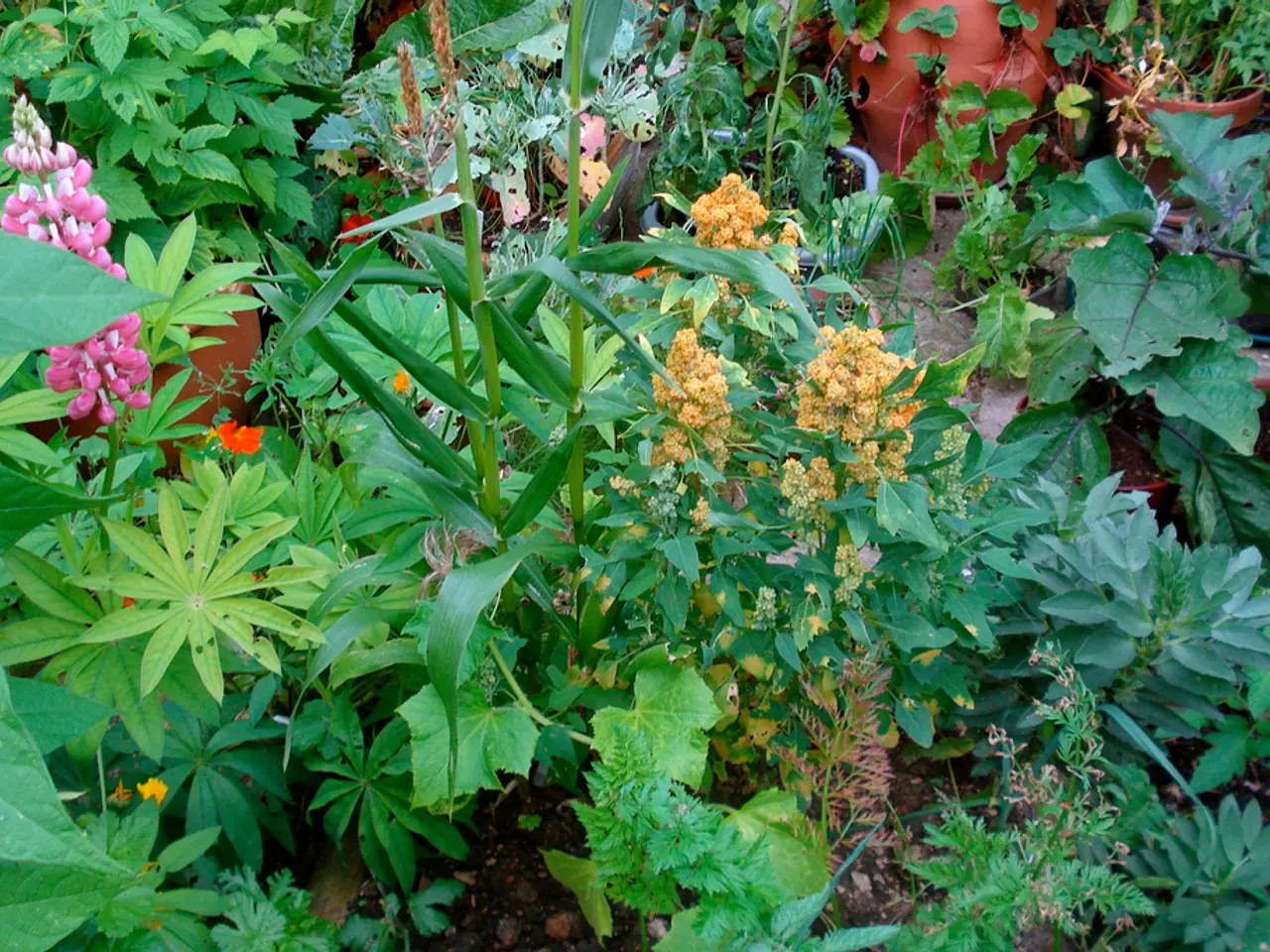Guide to Cultivating Chrysanthemums
Garden Chrysanthemums: The Ultimate Fall Bloomers
Chrysanthemums, adored for their late-summer to autumn blooms, bring a splash of color to gardens when little else is in bloom. With their range of different hues, sizes, and shapes, these plants can be single or double-flowered, even forming multiple flowers on one stem when they turn into 'spray' chrysanthemums.
A must-have for any flower arrangement, chrysanthemums are both a delight in fresh and dried arrangements. They can last for up to three weeks in a vase and are perfect for those looking to preserve their blooms.
Garden chrysanthemums are available in two varieties - perennial and annual, with hardy and half-hardy options within each category. For reliably perennial chrysanthemums, opt for hardy varieties and let them freeze outside, ensuring they will return the following year. Half-hardy chrysanthemums, however, will not survive UK winters and need to be dug up and overwintered in a greenhouse for continued flowering, with some varieties continuing to bloom until December.
Take note that garden chrysanthemums are not the same as indoor chrysanthemums, which are sold as houseplants. Indoor chrysanthemums are tender and should not be taken outside in autumn and winter. Instead, they are best treated as cut flowers due to their low likelihood of re-flowering after blooming.
Planting Chrysanthemums: When and Where
Chrysanthemums are sold as rooted cuttings or small plants and are typically available for planting in spring. Plant these at home, and then plant out once the risk of frost has passed, around late May. For immediate results, opt for garden-ready chrysanthemums available in summer and autumn.
Find a sunny, sheltered position with fertile, well-drained soil for your chrysanthemums. Whether you grow them in pots or garden borders, make sure they receive ample sunlight and are kept in a spot with good drainage.
Caring for Chrysanthemums: Water, Support, and Pruning
Keep your chrysanthemums well-watered in summer, and feed container-grown plants with a liquid fertilizer from late spring. However, once the flower buds start to open, stop feeding to encourage blooms.
When growing spray chrysanthemums, pinch out the growing tip when stems reach about 20cm, fostering the growth of side shoots for a more beautiful display of flowers. For single-bloom chrysanthemums, deadhead side-shoots to channel the plant’s energy into producing new flowers.
In areas with well-draining soil, leave hardy chrysanthemums in the ground during the winter to overwinter outside. Otherwise, dig up and either replant indoors in a greenhouse, or store them in pots or trays of compost with barely-moist conditions over winter.
Propagating Chrysanthemums: The Basics
Propagate chrysanthemums by taking basal stem cuttings or seeds. The easiest method is taking basal stem cuttings in spring when basal shoots are around 6cm above ground. Trim the cuttings to have at least three leaves at the top and insert them into a pot of moist cuttings compost. Place the pot in a warm, well-lit spot and watch as the cuttings take root and grow.
Pests and Diseases
Chrysanthemums might suffer from various pests such as aphids, red spider mites, leaf miners, and eelworms. Regularly inspect your plants to promptly address any infestations. Common ailments include white rust, a fungal disease that can lead to light brown spots on the upper leaf surfaces and off-white pustules on the undersides. Swiftly remove and discard infected leaves to stop the spread.
Choosing Chrysanthemum Varieties to Grow
- 'Bruno Bronze' - an attractive orange chrysanthemum, perfect for cutting, flowering in September to November. It grows up to 1.2m tall and 30cm wide.
- 'Polar Star' - an eye-catching, fast-growing annual, blooming in summer. It grows up to 75cm in height and 40cm wide.
- 'Green Mist' - distinctive green flowers making a strong statement in the border and the vase. This variety grows up to 50cm in height and 50cm wide.
- 'Ruby Mound' - boasting large, double ruby-red flowers from late summer through autumn. It grows up to 50cm tall and 50cm wide.
- 'Misty Cream' - featuring large, pom-pom-like, fully-double yellow-cream flowers that can last until November. This variety is better suited for the cuttings patch than as part of an ornamental border. It grows up to 50cm tall and 50cm wide.
Whether you prefer to grow chrysanthemums as annuals, perennials, or cut flowers, these resilient plants make a remarkable addition to any garden, delighting both seasoned gardeners and newcomers alike.
Chrysanthemums, after being planted at home in spring, are best placed in a sunny, sheltered position with fertile, well-drained soil, either in pots or garden borders, for optimal growth. As the chrysanthemum varieties available range from home-and-garden vibes, such as the hardy and long-blooming 'Ruby Mound', to decorative options for the home-and-garden enthusiast's home-and-garden, like the showy 'Misty Cream', they serve as versatile additions to any home-and-garden or lifestyle.








